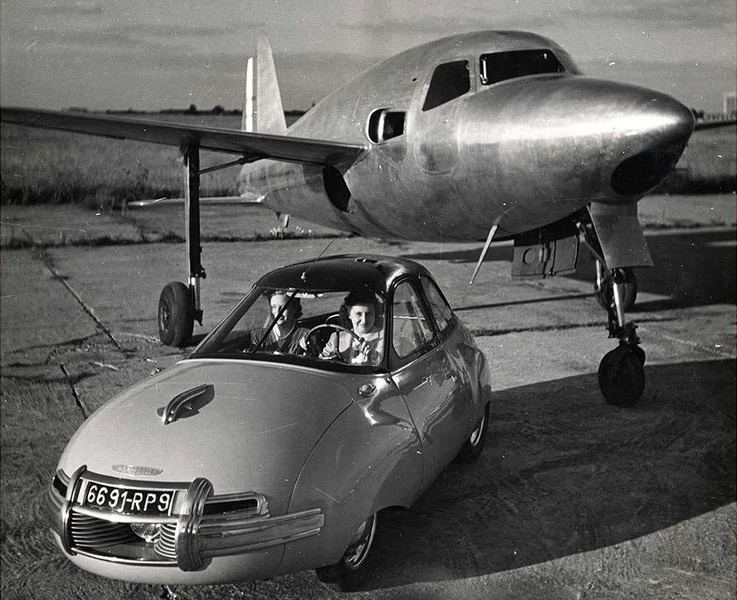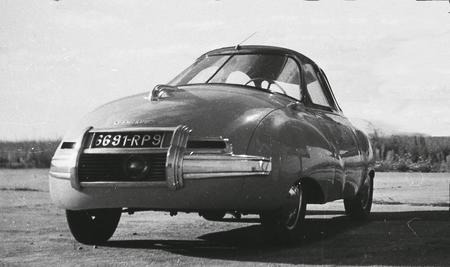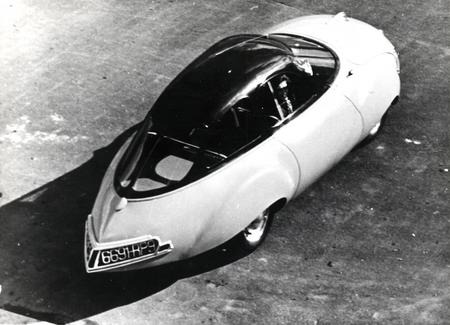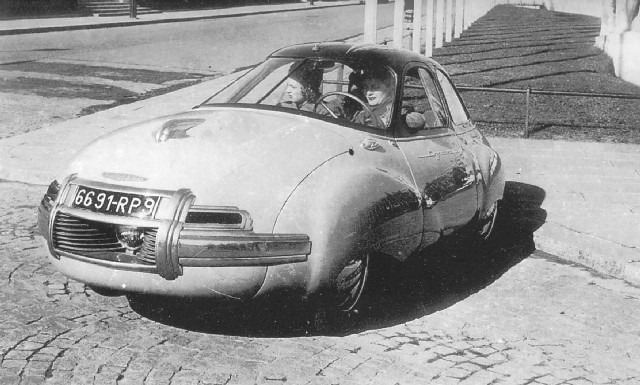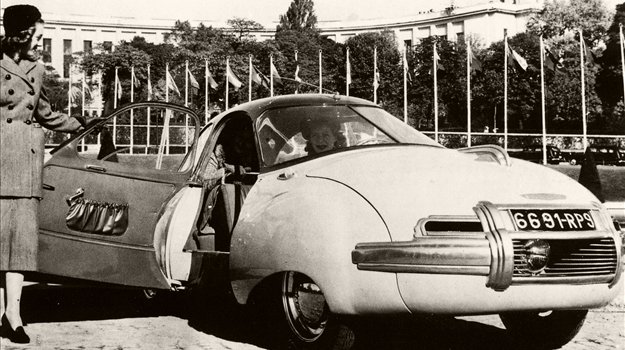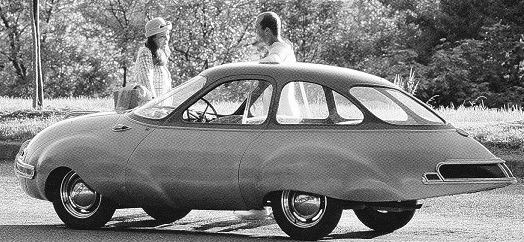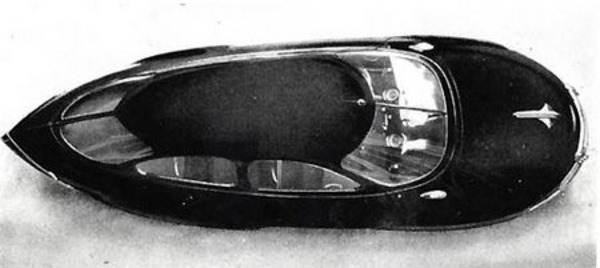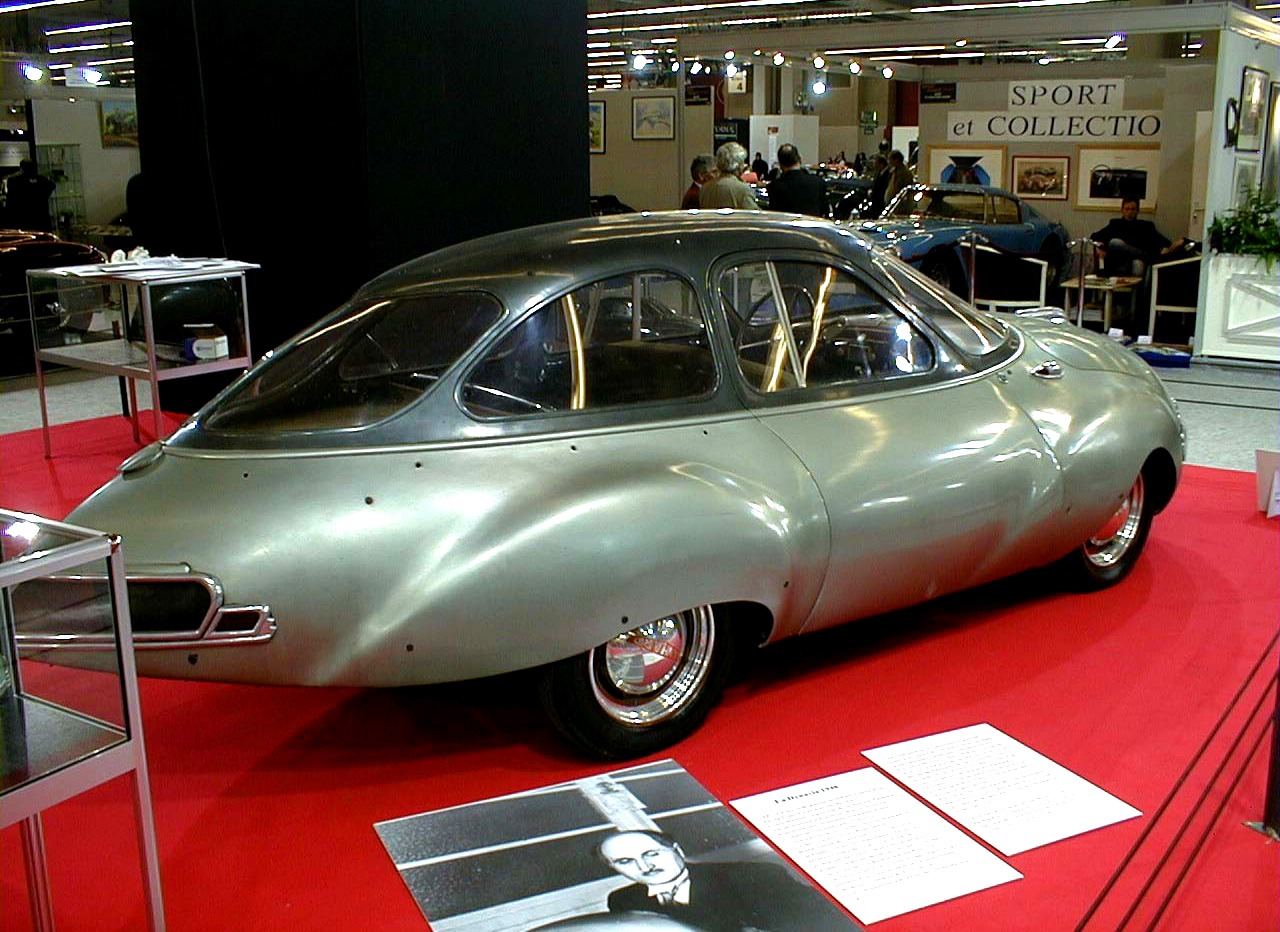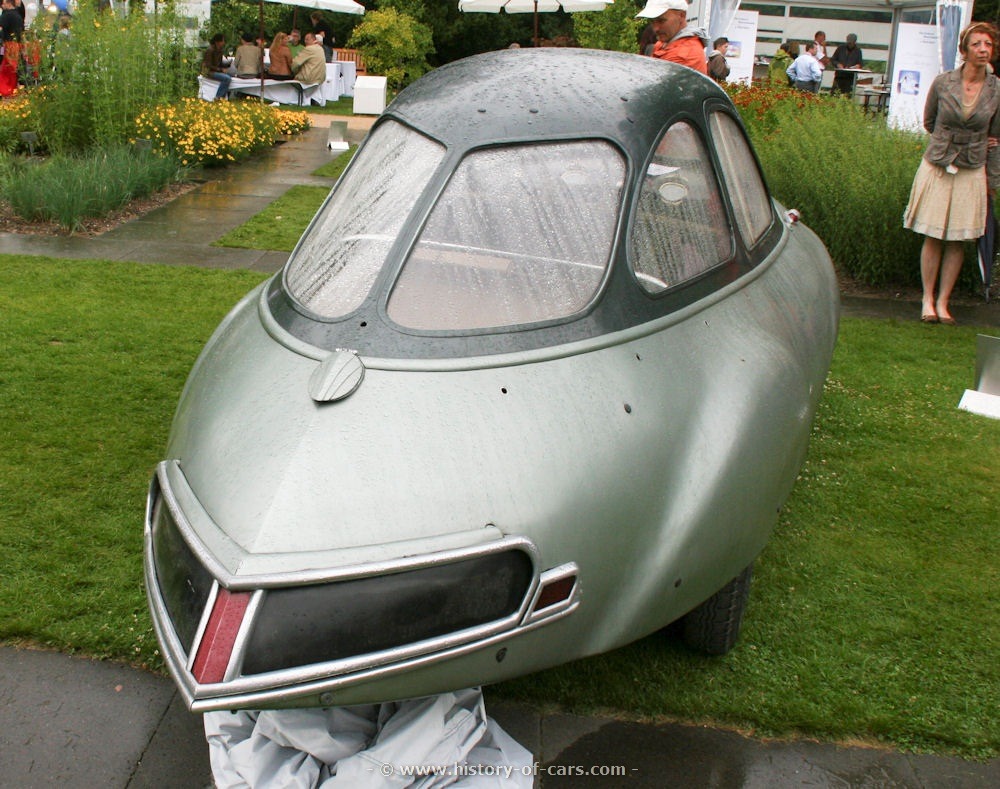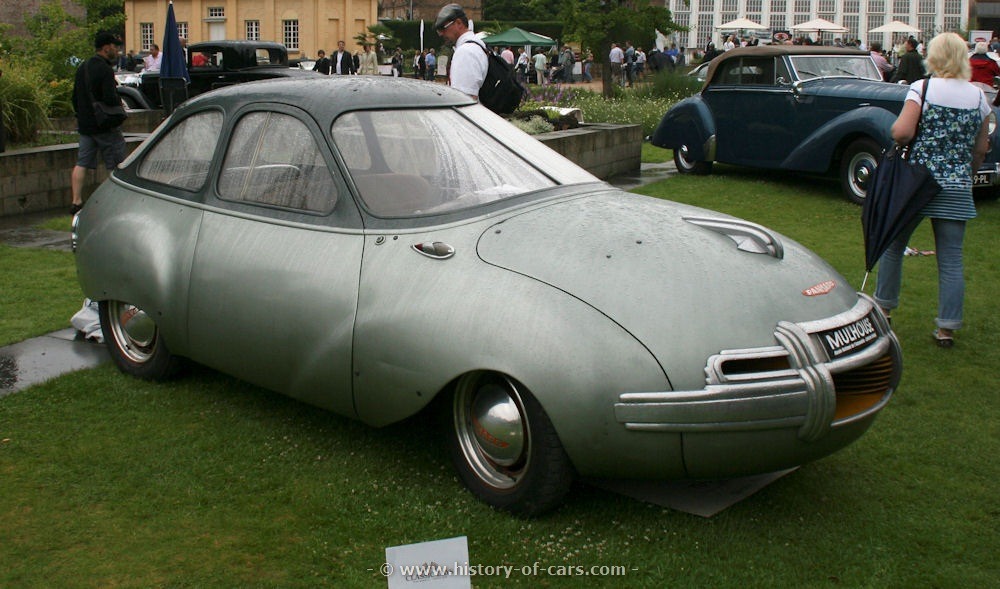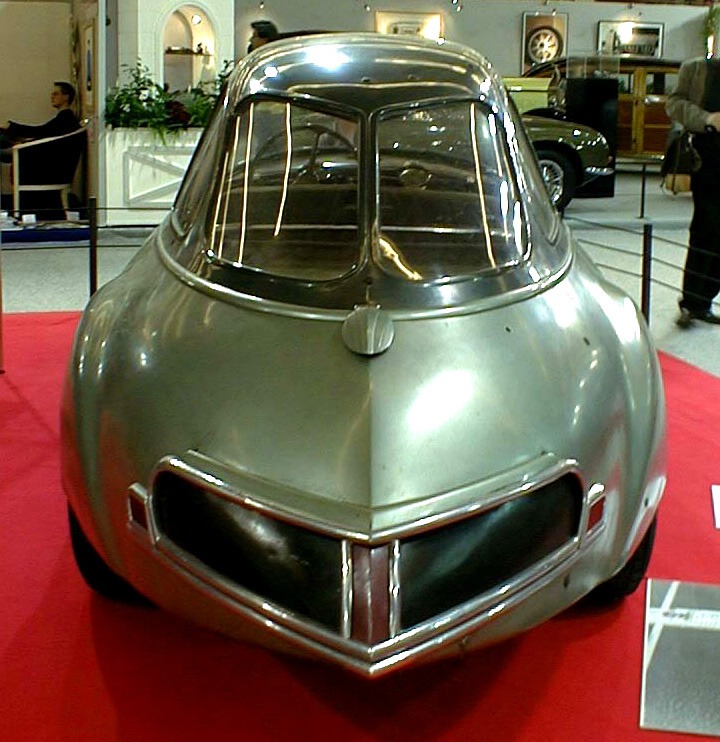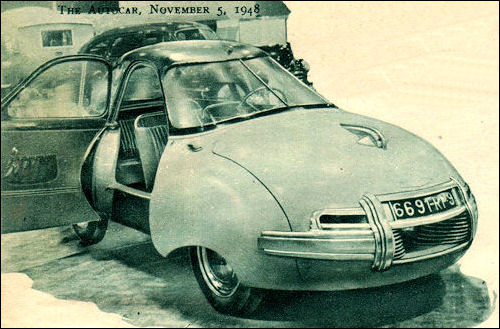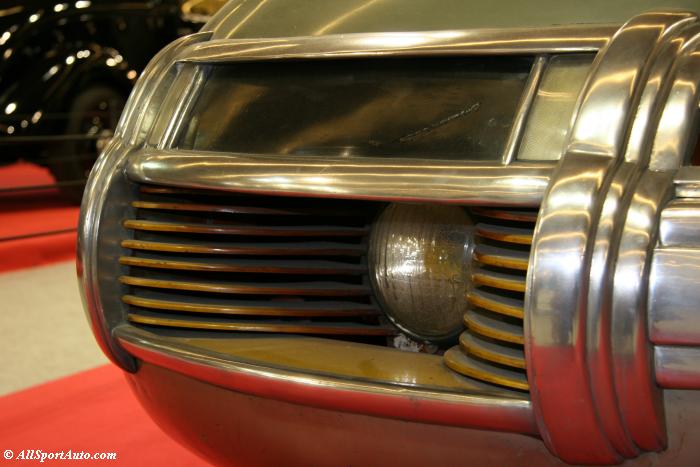The “aviation” styling of the Dynavia’s droplet bodywork made waves when the prototype was presented by Panhard at the Paris Motor Show in 1948. The incredible aerodynamic body shape, with better properties even than today’s carefully profiled cars, meant that its consumption was startlingly low (less than 3.5 litres per 100 km (67.2 mpg)). The headlights are replaced at the front with a powerful central spotlight, used as a full beam light and fog light. The dipped beam lights were also an experimental design. Many of the innovations showcased on the Dynavia were reused for the Dyna Z1.
French manufacturers Panhard, Voisin and Citroën were very quick to use aerodynamics in design. From the 1930s, designers were seeking to reduce wind resistance in order to improve the shape and efficiency of their cars. Over the next twenty years, curves and more slender body shapes were introduced, to revolutionise the work of coachbuilders. Radiators were shrunk, mudguards incorporated into the bodywork, and headlights and bumpers inset. The bonnet was lowered, the curve of the roof continued in the shape of the windscreen and a boot space was included in the body at the rear of the vehicle.
citedelautomobile.com


